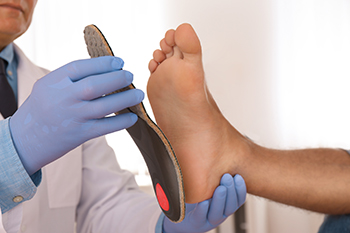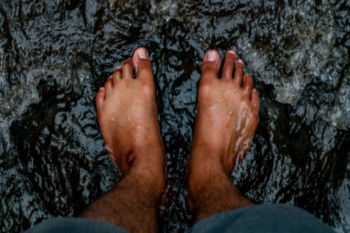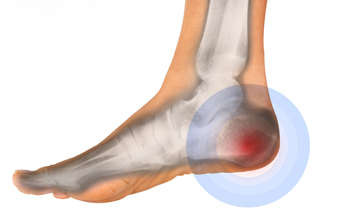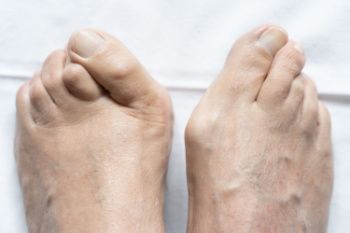Yakima
(509) 225-3668
Ellensburg
(509) 925-4633

Ankle-foot orthoses, or AFOs, are versatile devices designed to enhance mobility, provide stability, and correct alignment for individuals with lower limb challenges. They extend from below the knee to the foot, providing targeted support for conditions such as arthritis, muscle weakness, or joint instability. They come in three primary types, which are flexible, rigid, and jointed. Flexible AFOs are crafted from soft, pliable materials that support movement while offering compression and mild stabilization. These are ideal for conditions like foot drop or minor gait abnormalities, allowing users to maintain natural mobility. Rigid AFOs, constructed from firm materials like plastic or carbon fiber, immobilize the ankle and foot to ensure maximum support and alignment. They are commonly prescribed for severe conditions such as post-stroke recovery or significant ankle instability. Jointed AFOs include hinges that allow controlled movement, balancing support with functional mobility. These are especially beneficial for rehabilitation, helping users regain strength and range of motion while maintaining safety and stability during the healing process. If you have foot and ankle challenges, it is suggested that you schedule an appointment with a podiatrist to discuss whether an ankle-foot orthotic is right for you.
If you are having discomfort in your feet and would like to try orthotics, contact one of our podiatrists from Cascade Foot & Ankle. Our doctors can provide the care you need to keep you pain-free and on your feet.
What Are Orthotics?
Orthotics are inserts you can place into your shoes to help with a variety of foot problems such as flat feet or foot pain. Orthotics provide relief and comfort for minor foot and heel pain but can’t correct serious biomechanical problems in your feet.
Over-the-Counter Inserts
Orthotics come in a wide variety of over-the-counter inserts that are used to treat foot pain, heel pain, and minor problems. For example, arch supports can be inserted into your shoes to help correct overarched or flat feet, while gel insoles are often used because they provide comfort and relief from foot and heel pain by alleviating pressure.
Prescription Orthotics
If over-the-counter inserts don’t work for you or if you have a more severe foot concern, it is possible to have your podiatrist prescribe custom orthotics. These high-quality inserts are designed to treat problems such as abnormal motion, plantar fasciitis, and severe forms of heel pain. They can even be used to help patients suffering from diabetes by treating foot ulcers and painful calluses and are usually molded to your feet individually, which allows them to provide full support and comfort.
If you are experiencing minor to severe foot or heel pain, it’s recommended to speak with your podiatrist about the possibilities of using orthotics. A podiatrist can determine which type of orthotic is right for you and allow you to take the first steps towards being pain-free.
If you have any questions please contact our offices located in Yakima and Ellensburg, WA . We offer the newest diagnostic and treatment technologies for all your foot and ankle needs.

Hammertoes occur when a toe bends at its middle joint, resembling a hammer. It is often caused by muscle imbalances, tight shoes, or genetics. Left untreated, hammertoes can lead to corns, calluses, and joint stiffness. Treatment depends on the severity. In the early stages, conservative methods can provide relief. Switching to shoes with a wide toe box prevents pressure on toes, while orthotic inserts help correct alignment. Exercises like toe stretches and picking up small objects with your toes can strengthen muscles and improve flexibility. Pads or cushions can reduce discomfort caused by corns or rubbing. For advanced cases where the toe becomes rigid or painful, surgery may be necessary to realign joints or remove deformed tissue. If you have a painful hammertoe, it is suggested that you make an appointment with a podiatrist to discuss treatment options.
Hammertoes can be a painful condition to live with. For more information, contact one of our podiatrists of Cascade Foot & Ankle. Our doctors will answer any of your foot- and ankle-related questions.
Hammertoe
Hammertoe is a foot deformity that occurs due to an imbalance in the muscles, tendons, or ligaments that normally hold the toe straight. It can be caused by the type of shoes you wear, your foot structure, trauma, and certain disease processes.
Symptoms
Risk Factors
Treatment
If you have hammertoe, you should change into a more comfortable shoe that provides enough room for your toes. Exercises such as picking up marbles may strengthen and stretch your toe muscles. Nevertheless, it is important to seek assistance from a podiatrist in order to determine the severity of your hammertoe and see which treatment option will work best for you.
If you have any questions, please feel free to contact our offices located in Yakima and Ellensburg, WA . We offer the newest diagnostic and treatment technologies for all your foot care needs.

Ankle sprains are one of the most common injuries in athletes, caused by overstretching or tearing the ligaments that stabilize the joint. They often occur during sudden movements like jumping, pivoting, or uneven landings. Each sprain is unique, ranging from mild to severe, depending on the extent of ligament damage. Symptoms include pain, swelling, bruising, and difficulty bearing weight. Immediate care involves rest, which helps reduce swelling and pain. However, more severe sprains may require medical attention and targeted stretching to ensure proper healing and avoid long-term instability. Prevention strategies include strengthening exercises, ankle taping, wearing supportive footwear, and avoiding risky movements. If you have persistent pain or repeated ankle sprains, it is suggested that you schedule an appointment with a podiatrist to develop a treatment plan and ensure a safe return to sports.
Sports related foot and ankle injuries require proper treatment before players can go back to their regular routines. For more information, contact one of our podiatrists of Cascade Foot & Ankle. Our doctors can provide the care you need to keep you pain-free and on your feet.
Sports Related Foot and Ankle Injuries
Foot and ankle injuries are a common occurrence when it comes to athletes of any sport. While many athletes dismiss the initial aches and pains, the truth is that ignoring potential foot and ankle injuries can lead to serious problems. As athletes continue to place pressure and strain the area further, a mild injury can turn into something as serious as a rupture and may lead to a permanent disability. There are many factors that contribute to sports related foot and ankle injuries, which include failure to warm up properly, not providing support or wearing bad footwear. Common injuries and conditions athletes face, including:
Sports related injuries are commonly treated using the RICE method. This includes rest, applying ice to the injured area, compression and elevating the ankle. More serious sprains and injuries may require surgery, which could include arthroscopic and reconstructive surgery. Rehabilitation and therapy may also be required in order to get any recovering athlete to become fully functional again. Any unusual aches and pains an athlete sustains must be evaluated by a licensed, reputable medical professional.
If you have any questions please feel free to contact our offices located in Yakima and Ellensburg, WA . We offer the newest diagnostic and treatment technologies for all your foot and ankle needs.

Heel pain often stems from two conditions, which are heel spurs and plantar fasciitis. A heel spur is a bony growth that forms on the underside of the heel bone, often as a result of long-term pressure or inflammation. This growth can cause sharp pain, especially during walking or standing. Plantar fasciitis is an inflammation of the thick band of tissue that runs along the bottom of the foot, connecting the heel to the toes. It typically causes pain in the heel and arch, particularly in the morning or after long periods of rest. While both conditions can cause heel pain, they differ in their underlying causes and treatment approaches. Proper diagnosis and targeted treatment can help manage pain and improve mobility for people suffering from either condition. If you are experiencing heel pain, it is strongly suggested that you are under the care of a podiatrist who can determine what the cause is, and treat it accordingly.
Many people suffer from bouts of heel pain. For more information, contact one of our podiatrists of Cascade Foot & Ankle. Our doctors can provide the care you need to keep you pain-free and on your feet.
Causes of Heel Pain
Heel pain is often associated with plantar fasciitis. The plantar fascia is a band of tissues that extends along the bottom of the foot. A rip or tear in this ligament can cause inflammation of the tissue.
Achilles tendonitis is another cause of heel pain. Inflammation of the Achilles tendon will cause pain from fractures and muscle tearing. Lack of flexibility is also another symptom.
Heel spurs are another cause of pain. When the tissues of the plantar fascia undergo a great deal of stress, it can lead to ligament separation from the heel bone, causing heel spurs.
Why Might Heel Pain Occur?
Treatments
Heel pain should be treated as soon as possible for immediate results. Keeping your feet in a stress-free environment will help. If you suffer from Achilles tendonitis or plantar fasciitis, applying ice will reduce the swelling. Stretching before an exercise like running will help the muscles. Using all these tips will help make heel pain a condition of the past.
If you have any questions please contact our offices located in Yakima and Ellensburg, WA . We offer the newest diagnostic and treatment technologies for all your foot and ankle needs.

Bunion removal surgery, also known as a bunionectomy, is a common treatment for severe bunions that cause pain, difficulty walking, or deformity. A bunion occurs when the big toe joint becomes misaligned, causing a bump on the side of the foot. Surgery is typically considered when non-surgical treatments, such as wearing orthotics or changing footwear, do not provide relief. Choosing surgery depends on the severity of the bunion, the level of discomfort, and its impact on daily activities. The procedure itself involves realigning the bones in the toe, removing the bump, and sometimes fusing the joint or cutting bones to correct the alignment. Recovery time varies but often requires several weeks of rest and limited movement. If you have a bunion that is causing you discomfort, it is suggested that you consult a podiatrist who can determine if bunion surgery is right for you.
Foot surgery is sometimes necessary to treat a foot ailment. To learn more, contact one of our podiatrists of Cascade Foot & Ankle. Our doctors will assist you with all of your foot and ankle needs.
When Is Surgery Necessary?
Foot and ankle surgery is generally reserved for cases in which less invasive, conservative procedures have failed to alleviate the problem. Some of the cases in which surgery may be necessary include:
What Types of Surgery Are There?
The type of surgery you receive will depend on the nature of the problem you have. Some of the possible surgeries include:
Benefits of Surgery
Although surgery is usually a last resort, it can provide more complete pain relief compared to non-surgical methods and may allow you to finally resume full activity.
Surgical techniques have also become increasingly sophisticated. Techniques like endoscopic surgery allow for smaller incisions and faster recovery times.
If you have any questions please feel free to contact our offices located in Yakima and Ellensburg, WA . We offer the newest diagnostic and treatment technologies for all your foot and ankle needs.